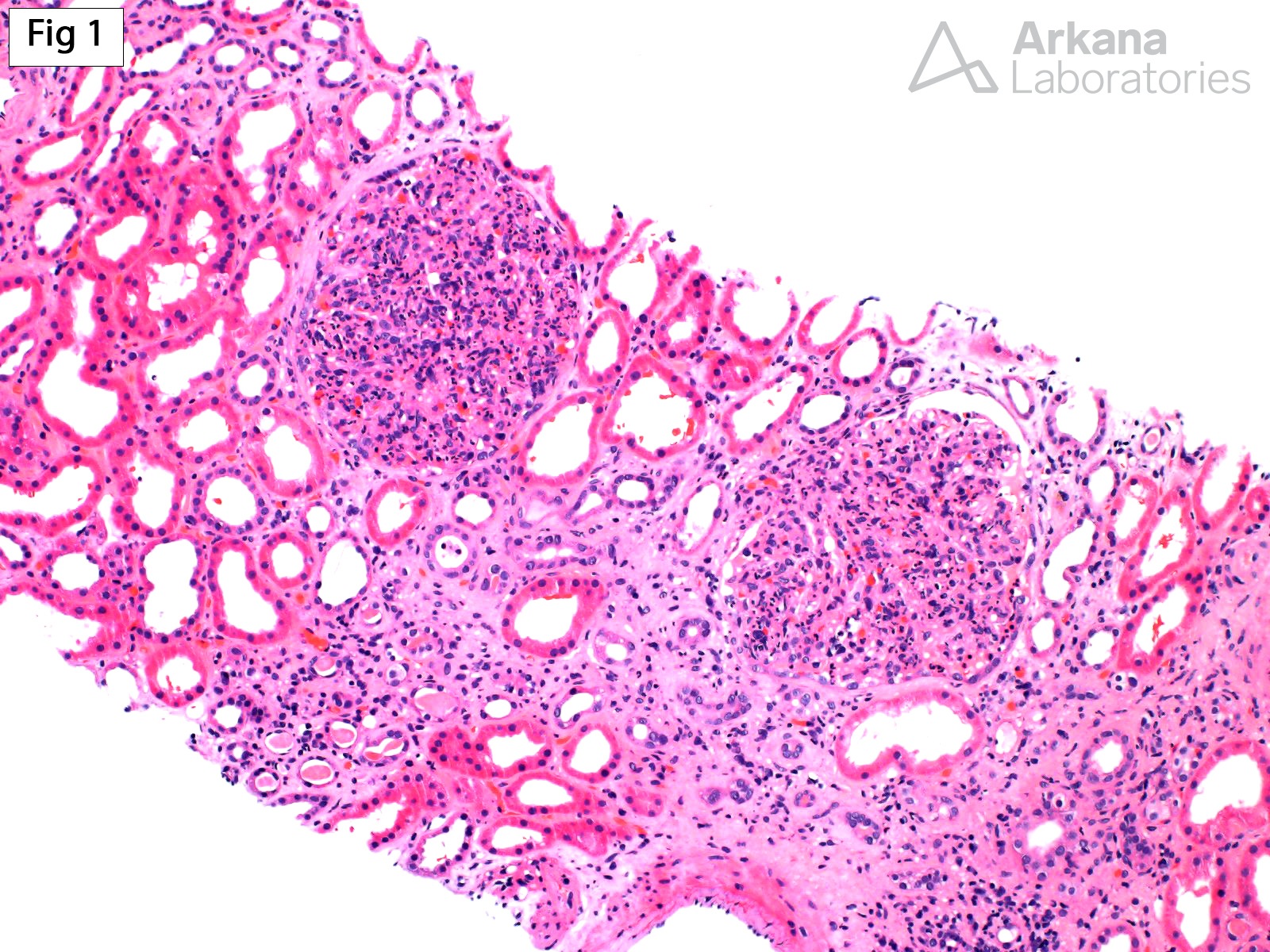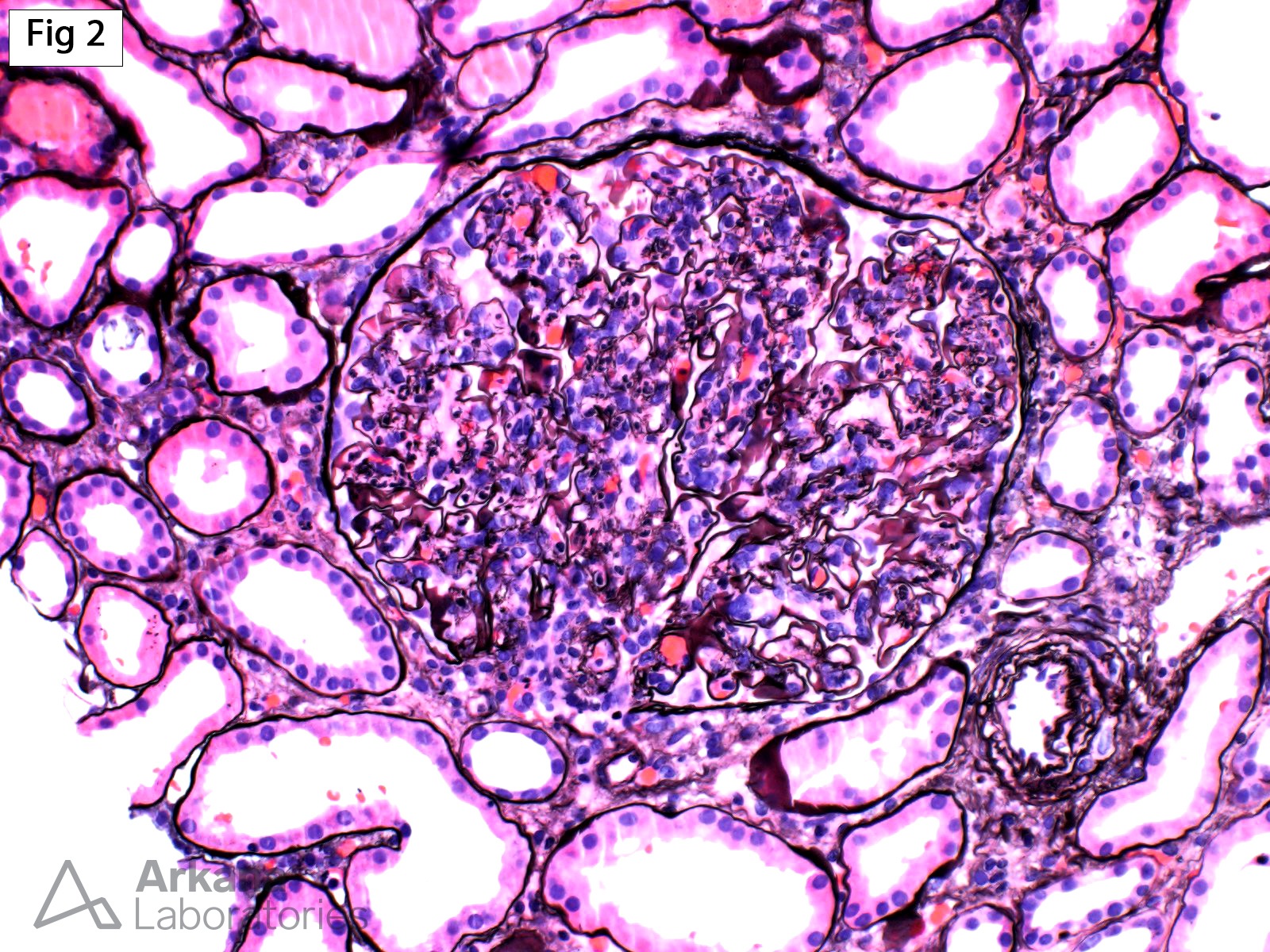This kidney biopsy was performed on a 63-year-old female with a history of hypertension, congestive heart failure, lower extremity edema and right leg ulcers with cellulitis. The serum creatinine is 3.1 mg/dl, the UPC is 0.9 g/g and C3 levels are low. Urinalysis shows moderate blood and a small amount of protein. By light microscopy, the glomeruli are enlarged and show diffuse and global endocapillary hypercellularity with increased neutrophils (Fig 1 – H&E and Fig 2 – Jones). Immunofluorescence shows isolated C3 deposits within the mesangium and peripheral capillary loops (Fig 3). No evidence of immunoglobulin deposition was present on routine or paraffin immunofluorescence. Electron microscopy (not shown) shows scattered mesangial, subendothelial and subepithelial hump-like immune complex-type electron dense deposits. In light of the clinical history, the morphologic findings are consistent with infection-associated glomerulonephritis; likely secondary to the patient’s known cellulitis. While immunoglobulin deposition is commonly seen in infection-associated glomerulonephritis, isolated C3 deposits are not uncommon and should not preclude making this diagnosis. In fact, it has been reported that up to 27% of patients with this form of glomerular injury may exhibit isolated C3 deposits (Ref 1). Although much less likely, the differential diagnosis would also include abnormalities in regulation of the alternative pathway of complement (such as C3 glomerulonephritis), but consideration of such diagnosis should be limited to patients who show persistence or progression of the disease (atypical postinfectious glomerulonephritis, Ref 2). Finally, in adults, performing paraffin immunofluorescence in all cases of isolated C3 deposits is of utmost importance to prevent misdiagnosing a “masked” paraprotein-related glomerulonephritis not otherwise evident on routine immunofluorescence.
References:
Nasr SH, Radhakrishnan J, D’Agati, VD. Bacterial infection-related glomerulonephritis in adults. Kidney International. 2013; 83: 792-803
Sethi S, Fervenza FC, Zhang Y, et al. Atypical postinfectious glomerulonephritis is associated with abnormalities in the alternative pathway of complement. Kidney International. 2013; 83: 293-299.
Quick note: This post is to be used for informational purposes only and does not constitute medical or health advice. Each person should consult their own doctor with respect to matters referenced. Arkana Laboratories assumes no liability for actions taken in reliance upon the information contained herein.




